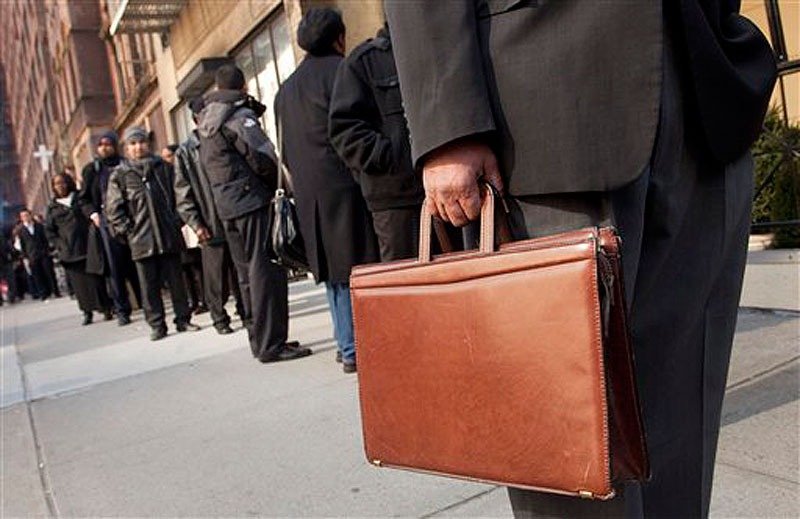WASHINGTON — The number of people seeking U.S. unemployment aid fell to a four-year low last week, bolstering the view that the job market is strengthening.
The Labor Department said Thursday that weekly applications dropped 5,000 to a seasonally adjusted 348,000. That’s the lowest level since March 2008, just months into the Great Recession. The four-week average of applications, a less volatile measure, dipped to 355,000, matching a four-year low.
Applications have steadily declined since last fall. The drop has coincided with the best three months of hiring in two years. From December through February, employers added an average of 245,000 jobs per month. That’s pushed down the unemployment rate to 8.3 percent, the lowest in three years.
The report suggests that employers added a similar level of jobs this month. This week’s figures cover the same week that the Labor Department surveys companies about hiring in March. Applications are slightly lower this week than in February’s survey week, which points to more job growth.
“U.S. employment growth looks to have continued in March at a respectable pace,” Jennifer Lee, an economist at BMO Capital Markets.
Separately, a measure of future U.S. economic activity rose for the fifth straight month.
The Conference Board said that its index of leading economic indicators rose 0.7 percent in February, after a 0.2 percent rise the previous month. The index is designed to anticipate economic conditions in the next three to six months. Most of its components have already been published.
Companies are hiring more because the economy is picking up. The economy grew at an annual rate of 3 percent in the final three months of last year. That was better than the 1.8 percent rate in the previous quarter.
Most economists expect growth will slow in the current quarter to below 2.5 percent, despite the pickup in hiring.
Consumers may be spending less because of rising gas prices and small pay increases. And slowing growth in China and a likely recession in Europe could drag on exports.
Still, growth should pick up later this year as rising job creation gives consumers more spending power.
Lee forecasts growth will accelerate to 2.9 percent in the final three months of this year, from 2.2 percent in the current quarter.
“If someone’s been out of work for a long time, and gets a job, they may not go out and spend all they earn,” she said. “There’s a lag,” as they pay off debts and rebuild savings.
Many companies are gaining confidence that the economy is improving. Ancestry.com, a website dedicated to family histories, plans to add 150 new staff this year, on top of an existing work force of about 1,000.
The company has seen a sharp rise in paid memberships, to 1.7 million from 1 million two years ago.
“We’re very optimistic,” said Eric Shoup, an executive vice president at the company. “We continue to see a really good response to both paid marketing and word of mouth marketing.”
There are other signs the economy is steadily recovering. Consumers are more confident and have stepped up spending. Auto sales are rising. Even the battered housing market is showing signs of improving.
January and February comprised the best winter for sales of previously occupied homes in five years, according to figures released Wednesday by the National Association of Realtors. January sales were the most since May 2010, the final month that a federal tax credit for home buyers was available. Sales dipped in February but were still 13 percent higher than six months earlier.
Developers are even seeking to build more homes. Requests for permits to build single-family homes and apartments rose 5 percent last month. That brought the annual rate for permits to the highest since October 2008, though they are still running at about half the rate of a healthy market.
The number of people receiving unemployment aid fell. Nearly 7.3 million people received benefits in the week ending March 3, the latest data available. That’s about 140,000 fewer than the previous week.
One concern is that rising gas prices will force consumers to cut back on discretionary spending. That could weigh on economic growth and slow hiring. The Federal Reserve says it expects oil and gas prices to temporarily boost inflation but predicts that longer-term inflation should remain stable.
The job market still has a ways to go to fully recover from the Great Recession. More than 12.8 million people remain unemployed and the economy still has 5 million fewer jobs than before the downturn.
Send questions/comments to the editors.


